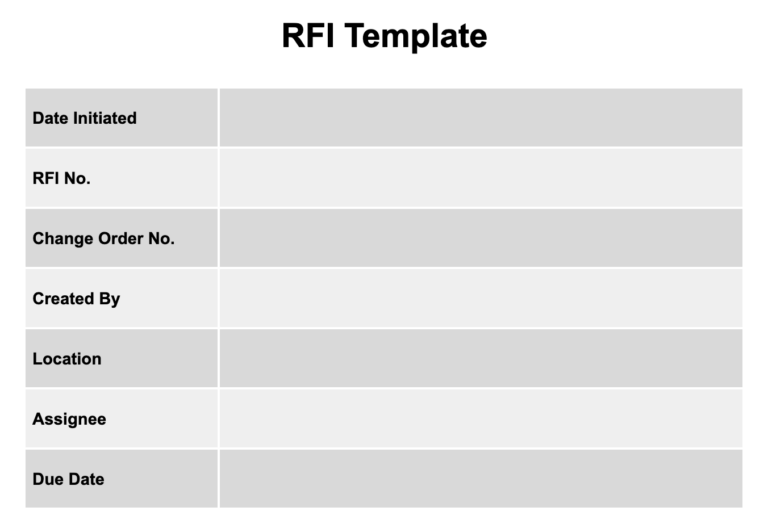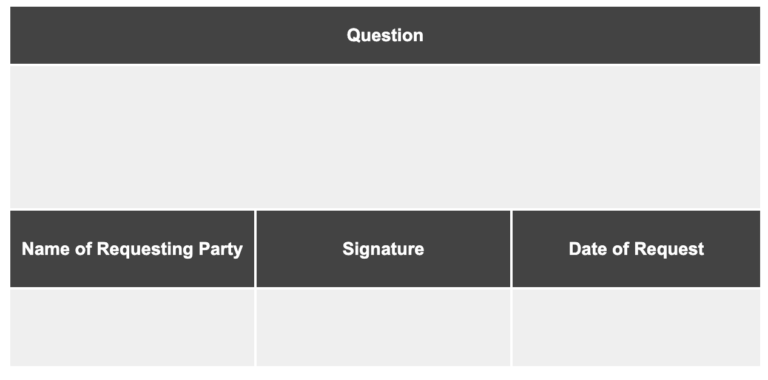— 5 min read
Using Data to Track Subcontractors’ Progress: 5 Keys to Success


Last Updated Sep 23, 2025

Anthony Verdiglione
Senior Strategic Product Consultant
Anthony Verdiglione is a seasoned construction professional and accomplished project manager with more than two decades of solid experience. Well-versed in nearly every construction discipline, Anthony adds immediate value to any transaction, leveraging his vast base of knowledge to drive projects, profits, and the industry. A true champion of construction, he works tirelessly to stay abreast of the latest trends while passing that value on to the customers he dutifully services.

Diane McCormick
Writer
49 articles
Diane McCormick is a freelance journalist covering construction, packaging, manufacturing, natural gas distribution, and waste oil recycling. A proud resident of Harrisburg, PA, Diane is well-versed in several types of digital and print media. Recognized as one of the premier voices in her region, she was recognized as the Keystone Media Freelance Journalist of the Year in 2022 and again in 2023.
Last Updated Sep 23, 2025

Data gives general contractors powerful insights into the progress that subcontractors are — or aren’t —making toward project deadlines.
However, the best data isn’t simply there for the taking. Optimizing the numbers to advance project goals demands data integrity, which is the meticulous logging, tracking, reporting and analyzing of data.
Data integrity in five key areas of construction management — materials management, finances, scheduling, RFIs and quality — opens new pathways for tracking subcontractor progress. This article explains why and how data integrity keeps the work of subcontractors on track to meet project goals and deliver a profitable, high-quality project.
Table of contents
1. Materials Management
The location and disposition of the materials and equipment that subcontractors need to perform their jobs tell a powerful story.
Quantities installed reveal progress as the materials ordered and delivered for a task are whittled down. Lag rates can signal that a major delay is ahead or that a contracted production schedule is in danger of missing a key deadline.
Having the right equipment and the right people is a choreography of getting the right things in place and making sure you’ll have that piece of equipment ready to put there.

Anthony Verdiglione
Senior Strategic Product Consultant
Procore Technologies
Careful materials tracking also keeps jobs on schedule by avoiding time-consuming hunts for misplaced items. This is especially true on horizontal projects where the search involves backtracking over miles of road.
With consistent data input and reporting, GCs can problem-solve and constantly reset goals to keep jobs on track. However, they should also verify the figures, confirming that installations are indeed being performed at the submitted rates.
2. Understanding Finances
A typical budget is a projection, creating estimates of the costs expected for the essentials of a jobsite, including subcontractors’ equipment and labor.
However, actual costs often run higher than budget projections. The key to staying close to budget projections is tracking spending in real-time. With that information in hand, GCs can make tweaks along the way, re-allocating funds or adjusting other line items to make up for the extra spending.
Data tracking empowers GCs to follow the disposition of all the varied elements of big-ticket items, such as a generator’s pad, pipes and installation. By steering clear of lump-sum contracts, the GC gets a better look at the task’s progression.
Free AI in Construction Course with Hugh Seaton
Start learning today with industry expert Hugh Seaton and discover how AI can boost efficiency, reduce risk, and transform your projects.

3. Accurate Scheduling
When it comes to scheduling, subcontractors want to know: "Where do you need me and when?"
Data integrity advises the look-aheads and pull planning that create a snapshot of the project on a future date. Vital data points for projecting progress two and four weeks ahead include installation rates, materials deliveries and labor needs.
At that point, a clear picture gives GCs the power to pinpoint the dates when subcontractors should show. Accurate and timely notice gives subcontractors the time they need to plan for their parts of the job, which promotes operational efficiencies through preparation.
Data can also keep subcontractors up to speed by blunting the consequences of potential delays. Many obstacles can’t be predicted, but the likely ones can be anticipated. It might be regional weather patterns, or a military installation’s safety standdowns while sensitive materiel is transported.
By analyzing historical and current data, GCs can prime their subcontractors to reactivate after delays. Instead of floundering to recover, subcontractors can have plans to move nimbly and get their work back on track.
Productivity should never undercut quality.
Anthony Verdiglione
Senior Strategic Product Consultant
Procore Technologies
4. Mastering RFIs
While it’s true that requests for information (RFIs) are essential to doing the job correctly, they can also slow progress and disrupt a carefully constructed plan. Using data to track, resolve and learn from RFIs can lessen the pain of a necessary part of construction.
On RFIs, the only dumb question is a question not asked, because if they do something wrong and we have to rework it, it costs me more.
Anthony Verdiglione
Senior Strategic Product Consultant
Procore Technologies
Every RFI that subcontractors submit should be entered into the project’s construction management software. This information then generates reports detailing the people responsible for providing answers, creating accountability for timely and efficient resolution.
Post-mortems of RFI resolutions also help contractors manage subcontractor timelines on future jobs. The findings provide valuable guidance for making scheduling decisions and judgments based on the engineer’s typical response time.
Free Download
General RFI Template
Download and customize a general-use RFI template to request more detail or clarification about drawings, specifications, schedules — or get answers to any questions about a project.
- For use on projects when an RFI form is not specified
- Ready-to-use
- Designed specifically for construction



5. Prioritizing Quality
In today’s construction environment, low bidders don’t always win the job.
Increasingly, owners want value. The equation typically pairs cost-effectiveness with quality. Private owners prioritize sustainability and operational efficiencies in the finished product. Even public jobs, such as bridges, demand high standards to avoid liability in a litigious age.
Once again, data comes to the rescue: Historical data reveals the subcontractors who perform their work efficiently without compromising quality. These specialty contractors deliver on time, but with minimal safety events, change orders or rework. At commissioning, their work stands up to rigorous inspection and testing.
These subcontractors keep existing projects on track while the data proves their worthiness for future jobs.
Helping Drive Data to Drive Work
Developing the capabilities for data integrity takes time, but once instilled in the culture, it equips contractors with new insights into how subcontractors are aligning with broader project goals.
When you start to collect data, it’s a switch to realizing you are the generator of data. You’re going to be very reactionary in that first year or two because you don’t have enough history to back it up. You’ll be reacting to things that pop up.
Anthony Verdiglione
Senior Strategic Product Consultant
Procore Technologies
Through data integrity, general contractors solidify their ties with the go-to specialty contractors who contribute to delivering exceptional projects through operational efficiencies, risk mitigation, cost effectiveness and quality.
Explore data and trends for building materials prices.
Get the latest U.S. retail prices and view historical trends for common building materials.
Was this article helpful?
Thank you for your submission.
0%
0%
You voted that this article was . Was this a mistake? If so, change your vote
Scroll less, learn more about construction.
Subscribe to The Blueprint, Procore’s construction newsletter, to get content from industry experts delivered straight to your inbox.
By clicking this button, you agree to our Privacy Notice and Terms of Service.
Thank you!
You’re signed up to receive The Blueprint newsletter from Procore. You can unsubscribe at any time.
Categories:
Written by

Anthony Verdiglione
Senior Strategic Product Consultant | Procore Technologies
Anthony Verdiglione is a seasoned construction professional and accomplished project manager with more than two decades of solid experience. Well-versed in nearly every construction discipline, Anthony adds immediate value to any transaction, leveraging his vast base of knowledge to drive projects, profits, and the industry. A true champion of construction, he works tirelessly to stay abreast of the latest trends while passing that value on to the customers he dutifully services.
View profile
Diane McCormick
Writer | Procore Technologies
49 articles
Diane McCormick is a freelance journalist covering construction, packaging, manufacturing, natural gas distribution, and waste oil recycling. A proud resident of Harrisburg, PA, Diane is well-versed in several types of digital and print media. Recognized as one of the premier voices in her region, she was recognized as the Keystone Media Freelance Journalist of the Year in 2022 and again in 2023.
View profileExplore more helpful resources

Using Standard Operating Procedures for Better Contract Management
Every construction project is different, meaning that GCs have to be continually agile and strategic about applying their experience. Major categories change from project to project, from the owner to...

On the Safe Side: Using Data to Boost Subcontractor Safety
Capturing data to mitigate the safety risks incurred by subcontractors as well as in-house workers demands proactive risk management measures, transparent change management and methodical strategy. Applying data to safety...

Understanding Subcontractor Bid Packages in Construction
Construction bid packages can have a cascading impact on the success of a construction project. The quality of a bid project may affect the quality of the bids, which in...

How to Confidently Hire Subcontractors for Construction
Hiring a subcontractor can be a strategic way to manage risk, improve efficiency and deliver successful projects. For general contractors (GCs), however, the stakes can be high: The subcontractor team...
Free Tools
Calculators
Use our calculators to estimate the cost of construction materials for your next project.
Templates
Find a template to help you with your construction project tasks.
Material Price Tracker
Get the latest U.S. retail prices and view historical trends for common building materials.
Glossary
Explore key terms and phrases used in the industry.
